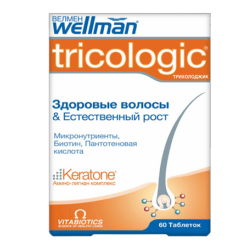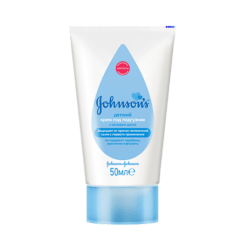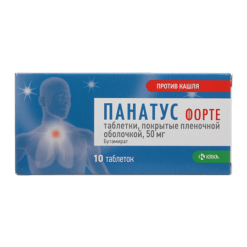-
×


-
×


-
×


Subtotal: €70.18






Subtotal: €70.18






Subtotal: €70.18
€10.07 €8.81
Pharmacotherapeutic group: immunostimulant
ATX code: L03AH
Pharmacological properties:
Pharmacodynamics:The drug is a means of etiotropic and immunostimulant therapy, has mediated antiviral action against the causative agents of influenza A and B, as well as other viruses causing acute respiratory diseases.
In in vitro studies the drug specifically suppresses (inhibits) multiplication (replication) of SARS-CoV-2 virus which is the causative agent of a new coronavirus infection (COVID-19).
The degree of inhibition of the pathogen increases with increasing drug concentration (dose-effect linearity is shown).
Limits the severity of the main clinical symptoms of influenza and acute respiratory infections, as well as reduces the duration of the disease and contributes to its uncomplicated course.
It increases the content of secretory immunoglobulin A (sIgA) in the nasopharynx mucosa, the entry gate of infection, increasing the local immunoresistance of the body to respiratory infections of viral and bacterial nature.
In case of preventive action the preparation increases potential metabolic activity of cells of innate immunity (neutrophil granulocytes and monocytes) which in case of development of infection increases their ability to absorb and destroy bacterial and viral agents due to increase of enzymatic (oxidative) activity, synthesis of cationic proteins and increase of the number of phagocytes. At the same time the initial state of the metabolic activity of cells of innate immunity, in the absence of infectious agents, does not change, being within normal values.
Bendazole induces in the body the production of endogenous interferon and has immunomodulatory effects (normalizes the immune response of the body). Enzymes produced by interferon in cells of various organs inhibit the replication of viruses.
Alpha-glutamyl-tryptophan (thymogen) is a synergist of immunomodulatory action of bendazole, normalizing the T-cell link of immunity.
Ascorbic acid activates the humoral part of the immune system, normalizes capillary permeability, thus reducing inflammation, and shows antioxidant properties, neutralizing the oxygen radicals that accompany the inflammatory process, increases the body’s resistance to infection.
Pharmacokinetics:when taken orally, the drug is completely absorbed from the gastrointestinal tract. Bioavailability of bendazole is about 80%, alpha-glutamyl-tryptophan – no more than 15%, ascorbic acid – up to 70%. Ascorbic acid is absorbed in the gastrointestinal tract (mainly in the jejunum). Binding with plasma proteins –
25%. TCmax after oral administration – 4 hours. It easily penetrates into leukocytes, platelets and then into all tissues, penetrates through the placenta.
Gastrointestinal diseases (gastric and 12 duodenal ulcer, bowel motility disorders, helminth infestation, giardiasis), consumption of vegetable and fruit juices, alkaline drinking reduce the binding of ascorbic acid in the intestine. Ascorbic acid is metabolized mainly in the liver to deoxyascorbic acid, then to oxalic acetic acid and diketogulonic acid. It is excreted by the kidneys, through the intestines, with sweat, breast milk unchanged and as metabolites. The products of bendazole biotransformation in blood are two conjugates formed due to methylation and carboethoxylation of imino group of imidazole ring of bendazole: 1-methyl-2-benzylbenzimidazole and 1-carboethoxy-2-benzylbenzimidazole. Bendazole metabolites are excreted in the urine. Alphaglutamyl-tryptophan is cleaved by peptidases into L-glutamic acid and L-tryptophan, which are used by the body in protein synthesis.
prevention and complex therapy of influenza and acute respiratory viral infections in children over one year of age.
Pharmacotherapeutic group: immunostimulating agent
ATX code: L03AX
Pharmacological properties:
Pharmacodynamics: the drug is a means of etiotropic and immunostimulating therapy, has an indirect antiviral effect against influenza A and B pathogens, as well as other viruses that cause acute respiratory diseases.
In in vitro studies, the drug specifically suppresses (inhibits) the reproduction (replication) of the SARS-CoV-2 virus, which is the causative agent of the new coronavirus infection (COVID-19).
The degree of inhibition of the pathogen increases with increasing concentration of the drug (the linearity of the dose-effect relationship is shown).
Reduces the severity of the main clinical symptoms of influenza and ARVI, and also shortens the duration of the disease and promotes its uncomplicated course.
Increases the content of secretory immunoglobulin A (sIgA) in the mucous membrane of the nasopharynx – the entrance gate of infection, increasing the local immunoresistance of the body to respiratory infections of a viral and bacterial nature.
With a preventive effect, the drug increases the potential metabolic activity of innate immune cells (neutrophil granulocytes and monocytes), which, in the event of an infection, increases their ability to absorb and destroy bacterial and viral agents due to increased enzymatic (oxidative) activity, synthesis of cationic proteins and an increase in the number of phagocytic cells. In this case, the initial state of metabolic activity of innate immune cells, in the absence of infectious agents, does not change, being within normal values.
Bendazole induces the body’s production of endogenous interferon and has an immunomodulatory effect (normalizes the body’s immune response). Enzymes, the production of which is induced by interferon in the cells of various organs, inhibit viral replication.
Alpha-glutamyl-tryptophan (thymogen) is a synergist for the immunomodulatory effect of bendazole, normalizing the T-cell component of immunity.
Ascorbic acid activates the humoral component of the immune system, normalizes capillary permeability, thereby reducing inflammation, and exhibits antioxidant properties, neutralizing oxygen radicals that accompany the inflammatory process, and increases the body’s resistance to infection.
Pharmacokinetics: when taken orally, the drug is completely absorbed from the gastrointestinal tract. The bioavailability of bendazole is about 80%, alpha-glutamyl-tryptophan is no more than 15%, ascorbic acid is up to 70%. Ascorbic acid is absorbed in the gastrointestinal tract (mainly in the jejunum). Plasma protein binding –
25%. Tmax after oral administration – 4 hours. Easily penetrates into leukocytes, platelets, and then into all tissues, penetrates the placenta.
Gastrointestinal diseases (peptic ulcer of the stomach and duodenum, impaired intestinal motility, helminthic infestation, giardiasis), consumption of vegetable and fruit juices, and alkaline drinking reduce the binding of ascorbic acid in the intestine. Ascorbic acid is metabolized primarily in the liver into deoxyascorbic acid, then into oxaloacetic and diketogulonic acids. It is excreted by the kidneys, through the intestines, with sweat, breast milk unchanged and in the form of metabolites. The products of bendazole biotransformation in the blood are two conjugates formed as a result of methylation and carboethoxylation of the imino group of the imidazole ring of bendazole: 1-methyl-2-benzylbenzimidazole and 1-carboethoxy-2benzylbenzimidazole. Bendazole metabolites are excreted in the urine. Alphaglutamyl-tryptophan, under the influence of peptidases, is broken down into L-glutamic acid and L-tryptophan, which are used by the body in protein synthesis.
The drug contains fructose; taking it for more than 2 weeks can cause dental damage.
After a repeated course, monitoring of blood glucose concentrations is recommended.
Information for patients with diabetes mellitus: 1 ml of drug solution contains 20 mg of lactose and 366.6 mg of fructose (in a preparation without flavoring or 366.2 mg of fructose in a preparation with flavoring), which corresponds to 0.032 bread units (XU).
Sugar content in single and daily doses of the drug, in XE:
Ready solution, ml
Single dose, XE
Daily dose, XE
2
0.06
0.19
4
0.13
0.38
8
0.26
0.7
12
0.38
1.15
Impact on the ability to drive vehicles and machinery:
The drug does not affect the ability to drive vehicles, operate moving machinery, or engage in other potentially hazardous activities that require increased concentration and speed of psychomotor reactions.
Alpha Glutamyl, Tryptophan, Ascorbic Acid, Bendazole
1 ml of the prepared solution contains:
Active ingredients:
Alpha glutamyl tryptophan
(Thymogen sodium in terms of thymogen) 0.15 mg
Ascorbic acid 12 mg
Bendazole hydrochloride [Dibazole] 1.25 mg
Excipients:
Lactose monohydrate 20 mg
In the preparation without flavoring:
Fructose 366.6 mg
In a preparation with flavoring:
Fructose 366.2 mg
Food flavoring
“Orange”, or “Strawberry”, or “Cranberry” 0.4 mg
During pregnancy, taking the drug is not recommended due to insufficient clinical data. During breastfeeding, use is possible if the expected benefit to the mother outweighs the potential risk to the child. If you need to take the drug during breastfeeding, please consult your doctor.
Hypersensitivity to the components of the drug, lactase deficiency, lactose intolerance, sucrase/isomaltase deficiency, fructose intolerance, glucose-galactose malabsorption, pregnancy, children under 1 year of age. If necessary, please consult your doctor before taking the drug.
With caution:
Consult your doctor before taking the drug if you have diabetes, intolerance to certain sugars, or arterial hypotension.
a short-term decrease in blood pressure is possible. Possible allergic reactions: urticaria. In these cases, the use of the drug is stopped and symptomatic treatment and antihistamines are prescribed.
Consult your doctor if you experience any of the side effects mentioned or other side effects not listed in the instructions.
If the side effects listed in the instructions get worse, tell your doctor.
No interaction of alpha-glutamyl-tryptophan with drugs has been identified.
Bendazole prevents the increase in total peripheral vascular resistance caused by the use of non-selective beta-blockers. Strengthens the hypotensive (lowering blood pressure) effect of antihypertensive and diuretic drugs. Phentolamine enhances the hypotensive effect of bendazole.
Ascorbic acid increases the concentration in the blood of antibacterial drugs of the tetracycline series and benzylpenicillin. Improves the absorption of iron (Fe) preparations in the intestine. Reduces the effectiveness of heparin and indirect anticoagulants. Acetylsalicylic acid (ASA), oral contraceptives, fresh juices and alkaline drinks reduce its absorption and absorption. When used simultaneously with ASA, the urinary excretion of ascorbic acid increases and the excretion of ASA decreases. ASA reduces the absorption of ascorbic acid by approximately 30%. Ascorbic acid increases the risk of developing crystalluria when using drugs containing acetylsalicylic acid (ASA) and short-acting sulfonamides, slows down the excretion of acids by the kidneys, increases the excretion of drugs with an alkaline reaction (including alkaloids), and reduces the concentration in the blood of oral contraceptives. When used simultaneously, it reduces the chronotropic effect of isoprenaline. Reduces the therapeutic effect of antipsychotic drugs (neuroleptics) – phenothiazine derivatives, tubular reabsorption of amphetamine and tricyclic antidepressants. Barbiturates and primidone increase the excretion of ascorbic acid in the urine.
Possible simultaneous use with antiviral drugs and symptomatic treatment of influenza and ARVI.
Consult your doctor if you are taking the medications listed in this section or other medications.
cases of overdose have not been described.
Store at a temperature not exceeding
25 oC. Keep out of the reach of children.
Store the prepared solution in a place protected from light at a temperature from 2 °C to 8 °C.
3 years.
The shelf life of the prepared solution is 10 days.
Do not use after the expiration date stated on the package.
Cytomed MBNPK, Russia
| Shelf life | 3 years. Shelf life of the prepared solution is 10 days. Do not use after the expiration date stated on the package. |
|---|---|
| Conditions of storage | Store at a temperature not exceeding 25 oC. Keep out of reach of children. Store the prepared solution in the light-protected place at the temperature from 2 oC to 8 oC. |
| Manufacturer | Cytomed MBNPK, Russia |
| Medication form | Powder for preparation of solution for oral administration |
| Brand | Cytomed MBNPK |
Buy Citovir-3, 20 g with delivery to USA, UK, Europe and over 120 other countries.